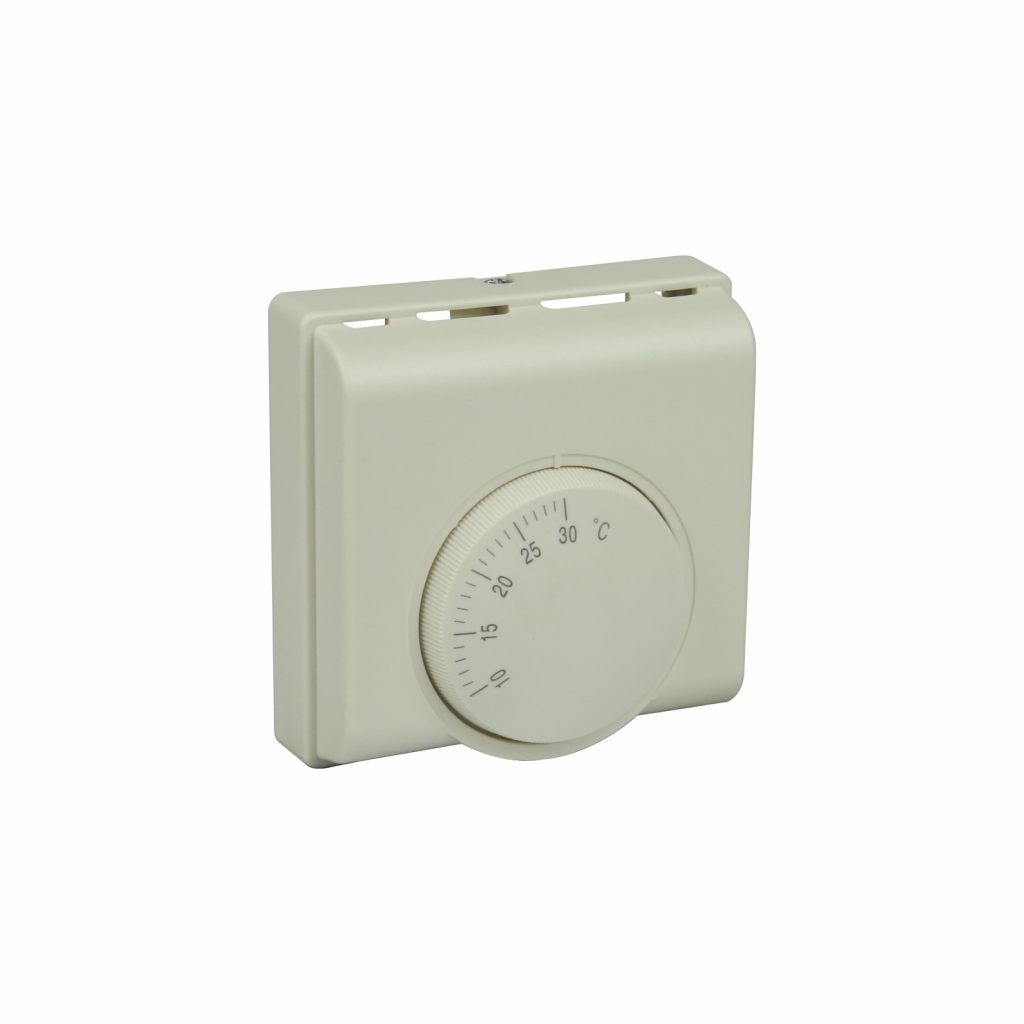What Are the Different Types of Thermostat Controllers?
Table of Contents
ToggleThermostat controllers are devices needed to maintain temperature control in homes, commercial spaces, and industrial environments.
Let’s explore the different types of thermostat controllers and their applications to help you choose the right one for your needs.
5 Types of Thermostat Controllers
What are the different types of thermostat controllers? The types of thermostat controllers are:
- Manual thermostat controllers;
- Programmable thermostat controllers;
- Smart thermostat controllers;
- WiFi thermostat controllers; and
- Line voltage thermostat controllers
1. Manual (Non-Programmable) Thermostat Controllers
Manual thermostats are the most basic type of temperature controller. These thermostats allow users to manually adjust the temperature by turning a dial or pressing buttons. They do not have any programming features, which means you need to adjust the temperature each time you want to make changes.
| Best for: Small homes or areas where temperature control isn’t required to change frequently. |
2. Programmable Thermostat Controllers
A programmable thermostat allows users to set a schedule for temperature changes throughout the day. You can program it to lower the temperature while you’re asleep or at work and then automatically adjust when you’re home. This provides energy savings and added convenience.
| Best for: Homes and offices where temperature control can vary based on the time of day or occupancy. |
3. Smart Thermostat Controllers
Smart thermostats are internet-connected devices that allow users to control temperature settings remotely via a smartphone or computer. These thermostats can learn your preferences over time and adjust automatically, offering advanced energy-saving options. Some models also integrate with voice-activated assistants like Alexa or Google Home.
| Best for: Tech-savvy users looking for convenience and energy efficiency. |
4. Wi-Fi Thermostat Controllers
Similar to smart thermostats, Wi-Fi thermostats allow you to control your HVAC system remotely. However, they typically lack the learning and automation features found in more advanced smart models. With Wi-Fi connectivity, you can monitor and adjust the temperature from anywhere with an internet connection.
| Best for: Users who want remote access to their temperature control panel but don’t need advanced automation. |
5. Line Voltage Thermostat Controllers
Line voltage thermostats are used in systems that use direct electricity for heating, such as baseboard heaters and radiant heating systems. These thermostats control the flow of electricity to the heater, ensuring proper temperature control.
| Best for: Homes or commercial buildings with electric heating systems. |
How to Choose the Right Thermostat Controller
When selecting a thermostat controller, consider the following:
- System Compatibility: Ensure the thermostat is compatible with your HVAC or heating system.
- User Preference: Some users prefer manual control, while others enjoy the convenience of programmable or smart systems.
- Energy Savings: Smart and programmable thermostats can lead to energy savings by optimizing temperature settings based on usage.
Explore Tosunlux Thermostat Controllers thermostat
Choosing the right thermostat controller depends on your preferences, HVAC system, and energy-saving goals.
Tosunlux offers high-quality thermostat controllers, such as the SRT1150J thermostat, designed for precise temperature management across various environments. Contact us today for more info!
FAQ thermostat
1. What is the difference between a manual and programmable thermostat?
A manual thermostat requires you to adjust the temperature manually, while a programmable thermostat allows you to set a schedule for automatic temperature adjustments.
2. How does a smart thermostat save energy?
A smart thermostat learns your preferences and adjusts the temperature automatically based on your habits, helping reduce energy consumption.
3. What is a line voltage thermostat?
A line voltage thermostat is used for electric heating systems, controlling the flow of electricity to the heater to maintain the desired temperature.
Tel: +86-577-88671000
E-mail: ceo@tosun.com
Skype: tosunelectric
Wechat: +86-139 6881 9286
WhatsApp: +86-139 0587 7291
Address: Room No.1001 Wenzhou Fortune Center,Station Road, Wenzhou, China
REQUEST A QUOTE
WhatsApp us
 : +86-139 0587 7291
: +86-139 0587 7291 English
English Español
Español Русский
Русский Français
Français العربية
العربية Português do Brasil
Português do Brasil Українська
Українська Türkçe
Türkçe Polski
Polski Nederlands
Nederlands Italiano
Italiano Bahasa Indonesia
Bahasa Indonesia हिन्दी
हिन्दी اردو
اردو አማርኛ
አማርኛ Հայերեն
Հայերեն ไทย
ไทย Монгол
Монгол فارسی
فارسی Shqip
Shqip Ελληνικά
Ελληνικά



